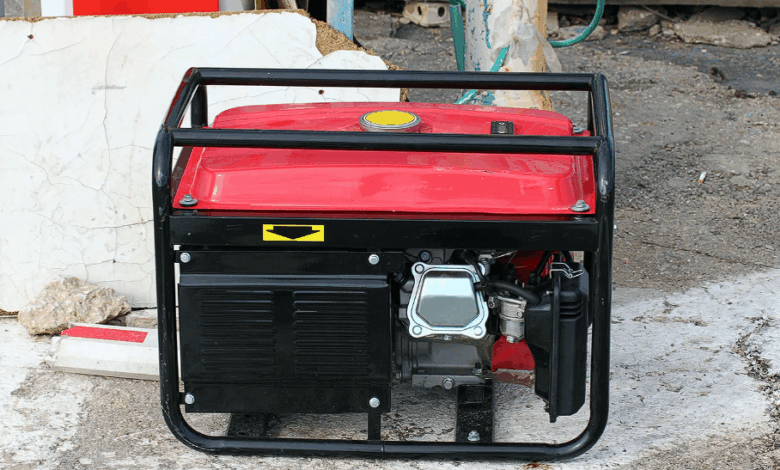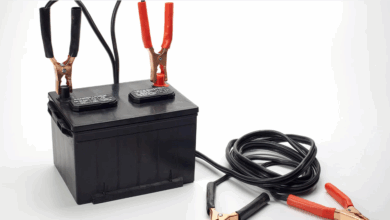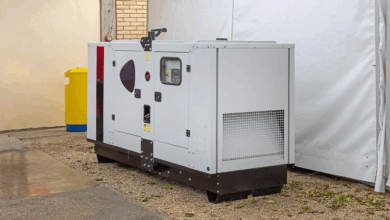Ultimate Guide to Generator Transfer Switches – Why You Need One and How It Works

If you plan to use both grid power and a backup generator safely, a transfer switch is one of the most essential components to install in your home. It allows you to seamlessly and safely switch between power sources, eliminating risks like backfeeding and overlapping currents that can damage your appliances—or worse, your entire electrical system.
In this guide, we’ll explore everything you need to know about transfer switches: what they are, how they work, types available, how to use them efficiently, and why every generator owner should have one.
Table of Contents
- What is a Transfer Switch?
- Types of Transfer Switches
- How a Generator Transfer Switch Works
- How to Use a Transfer Switch
- Why a Transfer Switch Is Important
- Cost of Installing a Transfer Switch
- Can You Run a Generator Without One?
- Ideal Placement for a Transfer Switch
- Advantages of Using a Transfer Switch
- Final Thoughts
- FAQs
What Is a Transfer Switch?
A transfer switch is an electrical device designed to separate and control two different power sources: utility power (from the grid) and generator power. It ensures that only one power source is connected to your home’s electrical system at a time, preventing dangerous overlap or backfeeding.
Without a transfer switch, simultaneous input from both sources can result in equipment damage, electrical fires, or harm to utility workers.
Depending on your setup, you can choose between:
- Manual Transfer Switches (MTS)
- Automatic Transfer Switches (ATS)
Types of Transfer Switches
1. Automatic Transfer Switch (ATS)
An ATS automatically detects a power outage and switches your home’s power supply from the grid to the generator without any manual intervention. Once grid power is restored, it automatically switches back.
Best for: Homes with standby generators, businesses, hospitals, data centers, and areas where power continuity is crucial.
2. Manual Transfer Switch (MTS)
An MTS requires you to manually flip a switch, breaker, or lever to shift between utility power and generator power.
Best for: Portable generator users or homeowners who don’t need continuous backup power.
How Does a Generator Transfer Switch Work?
The transfer switch acts as a safety gateway, ensuring only one power source feeds your home at any time.
- In manual systems, you manually select the power source.
- In automatic systems, the ATS constantly monitors power availability and performs the switch when it detects a failure or restoration.
⚡ Pro Tip: Use the built-in breakers in the transfer switch to assign specific loads to the generator. This helps avoid overloading and allows better control over your power usage.
How an Automatic Transfer Switch Works
An ATS uses microprocessor-based logic to monitor incoming utility power. If the system detects a drop in voltage or a complete outage, it signals the generator to start and switches your home’s electrical load over to it automatically.
Once utility power is restored and stable, the ATS will reverse the process—shutting off the generator and reconnecting your home to the grid.
How a Manual Transfer Switch Works
An MTS functions similarly but requires manual action. When the power goes out:
- You manually start your generator.
- Flip the switch or breakers on the transfer switch to connect to the generator.
- When grid power returns, turn off the generator and switch the system back.
Manual switches are a more budget-friendly option and are often used with portable generators.
📝 Note: For permanently installed standby generators, an ATS is strongly recommended to avoid the hassle of manually switching during bad weather or emergencies.
How to Use a Generator Transfer Switch
Here’s a general step-by-step guide for manual systems:
- Turn all transfer switch breakers to OFF (Not required for ATS).
- Connect the generator to the transfer switch via the inlet box.
- Start the generator and allow it to warm up.
- Switch on the breakers on the transfer switch one at a time to avoid overloading.
- When grid power returns, disconnect the generator and return the breakers to utility power.
In the case of ATS, all these steps are performed automatically.
Why Do You Need a Generator Transfer Switch?
- Safety: Prevents backfeeding and electrical hazards.
- Compliance: In many areas, it is legally required.
- Convenience: Easy to switch power sources without the mess of extension cords.
- Protection: Safeguards appliances from mixed power sources.
⚠️ Important: Backfeeding the grid without a transfer switch can damage your home’s electrical system and endanger utility workers. Always consult your local building authority or electrician.
How Much Does a Transfer Switch Cost?
The cost depends on the amperage, type (manual vs. automatic), and installation requirements.
| Amperage | Manual Transfer Switch | Automatic Transfer Switch |
| 30 Amp | $150 – $500 | $300 – $1,000 |
| 50 Amp | $200 – $700 | $500 – $1,500 |
| 100 Amp | $500 – $1,000 | $700 – $2,000 |
| 200 Amp | $700 – $1,400 | $1,000 – $2,000 |
| 400 Amp | $800 – $1,700 | $1,500 – $2,000+ |
💡 These estimates include electrician labor, wiring, and materials.
Can You Use a Generator Without a Transfer Switch?
Yes, though it’s not recommended. Alternatives include:
- Breaker interlock kits
- Dedicated inverter systems
- Relays or manual panel switches
However, none are as safe or code-compliant as a properly installed transfer switch.
📘 Want to learn how to connect a generator without a transfer switch? Check out our complete guide [here].
Where Should You Install a Transfer Switch?
Install your transfer switch next to your home’s main electrical panel—usually in the basement, garage, or utility room. This minimizes extension cord use, reduces fire risk, and streamlines power management.
Advantages of Using a Transfer Switch
- ✅ Eliminates power source overlap
- ✅ Reduces risk of fire or electrical injury
- ✅ Cleaner installation—no need for tangled extension cords
- ✅ Enables precise load management
- ✅ ATS options offer full automation
- ✅ Ensures compliance with electrical codes
A generator transfer switch is not just a convenience—it’s a critical safety tool. Whether you opt for a manual or automatic version, a transfer switch ensures safe, seamless power transitions and protects both your property and loved ones.
While there are other ways to power your home during outages, none match the safety, convenience, and reliability of a transfer switch.
FAQs
Q: Do I need to turn off the main breaker when using a transfer switch?
Yes. When switching to generator power, make sure the main breaker is set to the generator position.
Q: Do I need a permit to install a transfer switch?
In most areas, yes. A licensed electrician must file the proper permits, and the installation usually requires inspection.
Q: Are there alternatives to transfer switches?
Yes, interlock kits, breaker panels, and inverters are alternatives, but they may not offer the same level of safety or convenience.




![How to Bypass CO Sensor on Generator – [4-Step Safety Guide]](https://www.generator411.com/wp-content/uploads/2025/08/co-sensor-on-generator-390x220.png)